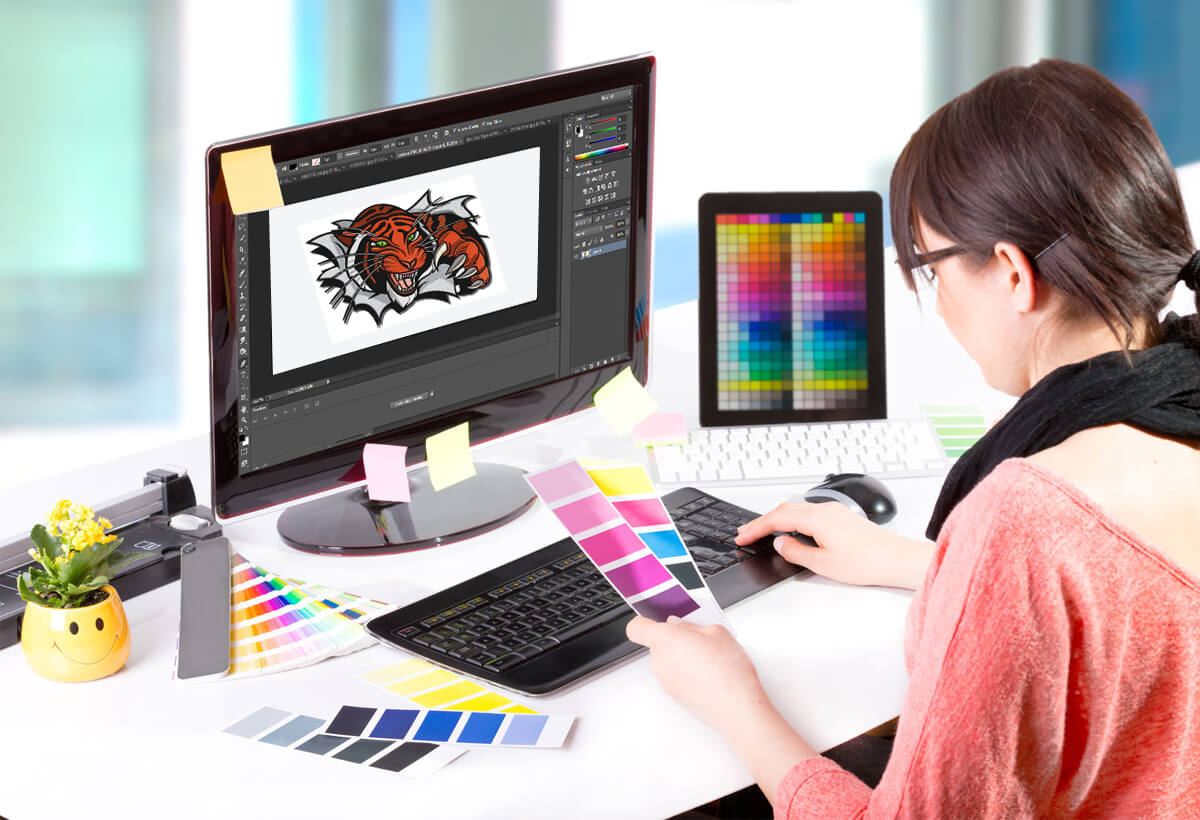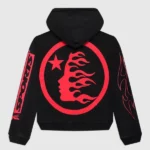Introduction to Vector Art Conversion
Have you ever had a beautiful design that looked pixelated and blurry when enlarged? This is where vector art conversion comes in. Unlike raster images, which are made up of tiny dots (pixels), vector images use mathematical formulas to create shapes. This means they can be scaled to any size without losing quality. In this article, we’ll dive into the world of vector art conversion services by Absolute Digitizing, explaining what it is, why it’s important, and how professional services can enhance your artwork.
Understanding Vector and Raster Graphics
Before we get into the nitty-gritty of vector art conversion, it’s essential to understand the difference between vector and raster graphics. Raster images are composed of pixels, which are tiny squares of color that form an image. Common raster formats include JPEG, PNG, and GIF. When you enlarge a raster image, it becomes pixelated and loses clarity.
On the other hand, vector graphics are made up of paths defined by a start and end point, along with other points, curves, and angles. These paths form shapes that are easily scalable. Common vector formats include AI, SVG, EPS, and PDF.
The Conversion Process
Vector art conversion involves transforming a raster image into a vector format. This process can be done manually using software like Adobe Illustrator, where an artist traces over the image, or automatically using specialized conversion software. Manual conversion is generally preferred for complex images to ensure accuracy and quality.
Why Choose Vector Art Conversion?
Scalability
One of the main advantages of vector art is its scalability. Whether you need a tiny logo for a business card or a massive billboard, vector graphics maintain their quality at any size. This flexibility makes vector art ideal for various applications, from digital media to print.
Editability
Vector graphics are easy to edit. You can change colors, shapes, and sizes without any loss of quality. This makes vector art perfect for branding, as logos and other elements can be easily modified to fit different marketing materials.
File Size Efficiency
Vector files are generally smaller than raster files, making them easier to store and share. This efficiency is particularly beneficial for web designers and developers who need to ensure fast loading times for websites.
Applications of Vector Art Conversion
Branding and Logo Design
A strong brand identity is crucial for any business, and a high-quality logo is a significant part of that identity. Vector art conversion ensures that your logo looks sharp and professional across all platforms, from business cards to large-scale banners.
Apparel and Merchandise
Vector graphics are widely used in the apparel industry for printing designs on t-shirts, hats, and other merchandise. The scalability of vector images ensures that the design looks great, whether it’s a small emblem on a sleeve or a large print on a shirt.
Advertising and Marketing
From flyers and brochures to billboards and online ads, vector graphics play a vital role in advertising. The ability to resize and edit vector images without losing quality ensures that your marketing materials always look their best.
Web and App Design
Web designers often use vector graphics for icons, buttons, and other interface elements. Vector files load quickly and look sharp on any screen size, providing a better user experience.
Choosing a Professional Vector Art Conversion Service
What to Look For
When selecting a professional vector art conversion service, consider the following factors:
– Quality: Look at examples of their previous work to ensure they can deliver high-quality vector images.
– Turnaround Time: Make sure they can meet your deadlines.
– Customer Service: Good communication is crucial. Choose a service that responds promptly and listens to your needs.
– Cost: While cost is always a factor, remember that you get what you pay for. Don’t sacrifice quality for a lower price.
The Conversion Process Explained
A professional vector art conversion service typically follows a detailed process to ensure the highest quality results:
1. Initial Consultation: Discuss your needs and provide the raster images you want to convert.
2. Review and Quotation: The service reviews your images and provides a quote based on complexity and turnaround time.
3. Conversion: Skilled artists manually trace the raster image using vector software, ensuring accuracy and attention to detail.
4. Quality Check: The converted vector image undergoes a quality check to ensure it meets all specifications.
5. Delivery: The final vector file is delivered to you in your preferred format.
Benefits of Professional Vector Art Conversion
Precision and Detail
Professional services ensure that every detail of your original image is accurately represented in the vector version. This level of precision is particularly important for intricate designs.
Time-Saving
While you can convert images to vector format yourself, it can be time-consuming and requires a certain level of expertise. Hiring a professional service saves you time and ensures high-quality results.
Expert Advice
Professionals can provide valuable advice on optimizing your designs for various applications. Whether you’re unsure about color choices or the best format for printing, their expertise can guide you.
Common Challenges in Vector Art Conversion
Complex Images
Highly detailed or complex images can be challenging to convert. Professional services have the tools and expertise to handle these challenges, ensuring that the final vector image retains all the necessary details.
Color Matching
Ensuring that colors in the vector image match those in the original raster image can be tricky. Professionals use advanced techniques to achieve accurate color matching, maintaining the integrity of your design.
File Compatibility
Different industries and applications may require specific vector file formats. Professional services can provide your vector images in the appropriate format, ensuring compatibility with your intended use.
Tools and Software for Vector Art Conversion
Adobe Illustrator
Adobe Illustrator is the industry standard for vector graphic design. It offers powerful tools for creating and editing vector images, making it a favorite among professionals.
CorelDRAW
CorelDRAW is another popular vector graphics editor, known for its user-friendly interface and robust feature set. It’s a great option for both beginners and experienced designers.
Inkscape
Inkscape is a free, open-source vector graphics editor. While it may not have all the advanced features of Adobe Illustrator or CorelDRAW, it’s a powerful tool for those on a budget.
Case Studies: Success Stories in Vector Art Conversion
Brand Revamp for a Local Business
A local bakery needed a brand revamp and hired a professional vector art conversion service to transform their hand-drawn logo into a scalable vector image. The result was a crisp, clean logo that looked fantastic on everything from signage to packaging.
Apparel Design for a Clothing Line
A new clothing line needed high-quality vector images for their t-shirt designs. The professional service converted their intricate raster designs into vector format, ensuring that the prints looked sharp and vibrant on fabric.
Marketing Campaign for an Event
An event planning company required vector graphics for their marketing campaign, including flyers, banners, and social media posts. The professional service delivered versatile vector files that could be easily adapted for various promotional materials.
Tips for Maintaining Your Vector Files
Keep Original Files
Always keep a copy of the original vector file. This allows you to make future edits without starting from scratch.
Use the Right Software
Use professional vector graphic software to make edits. This ensures that the quality of the image is maintained.
Regular Backups
Regularly back up your vector files to prevent data loss. Cloud storage solutions are a great option for easy access and security.
Future Trends in Vector Art Conversion
AI and Automation
Artificial intelligence and automation are becoming increasingly prevalent in the design industry. Future advancements may streamline the vector art conversion process, making it faster and more accessible.
Increased Demand for Customization
As businesses continue to seek unique and personalized branding, the demand for custom vector art conversion services is expected to grow. Professional services will need to adapt to meet these evolving needs.
Integration with Augmented Reality (AR)
Vector graphics are likely to play a significant role in the development of augmented reality experiences. High-quality vector images can enhance AR applications, providing crisp and clear visuals.
Conclusion
Vector art conversion is a powerful tool for enhancing your designs, offering scalability, editability, and efficiency. Whether you’re a business owner looking to revamp your brand or a designer needing precise and versatile graphics, professional vector art conversion services can take your artwork to the next level. By understanding the process, benefits, and applications, you can make informed decisions and ensure your designs always look their best.
Ready to transform your designs? Explore professional vector art conversion services today at Absolute Digitizing and see the difference it can make for your projects.


